- Home
- slideshows
- miscellaneous
- Everything we know about the coronavirus, from who's most at risk to where new cases are spreading
Everything we know about the coronavirus, from who's most at risk to where new cases are spreading
The coronavirus has spread to nearly all of the world's countries and territories.

The US has the world's highest case total by far, and the state of New York is the epicenter of the outbreak.

The US had one in five of the world's COVID-19 cases as of April 1.
As many as 100,000 to 240,000 people could die of the coronavirus in the US, even with shutdowns and stay-at-home orders, the White House coronavirus task force warned on Tuesday. Without any social distancing and mitigation efforts, between 1.5 and 2.2 million Americans could die, according to White House modeling.
At a White House press briefing on March 29, Trump announced that social distancing measures in the US will remain in effect through April 30.
"I knew everything. I knew it could be horrible, I knew it could be maybe good," President Donald Trump said. "I don't want to be a negative person ... We are going through the worst thing that the country has probably ever seen."
Gov. Andrew Cuomo said on March 29 that "thousands" will die in New York state, which he called the "epicenter" of the US's outbreak.
All 50 US states and Washington, DC, have reported coronavirus cases. Infections have also been confirmed in the US Virgin Islands, Guam, and Puerto Rico.
The healthcare system in Italy, which is home to one of the world's oldest populations, has been overwhelmed, with medical workers stretched thin and forced to decide who to save.

Italy has recorded the world's highest number of deaths.
Prime Minister Giuseppe Conte placed the nation of 60 million people under quarantine on March 10. He has since made the lockdown stricter, forbidding all travel within the country.
A third of the world's population is under some sort of travel restriction.

India put its 1.3 billion residents under a 21-day nationwide lockdown on March 24, effectively doubling the number of people under restrictions worldwide.
"There will be a total ban of coming out of your homes," Indian Prime Minister Narendra Modi said.
Since then, at least a third of the world's population has been under some sort of restriction. That's more people than were alive during WWII.
"Lockdown" isn't a technical term but can include mandatory geographic quarantines, closings of certain types of businesses, and bans on events and gatherings.
Many countries have also shut their borders, and the Trump administration has issued the highest possible travel warning for every country.
Based on UNESCO estimates, more than 1.5 billion students have had their education disrupted.
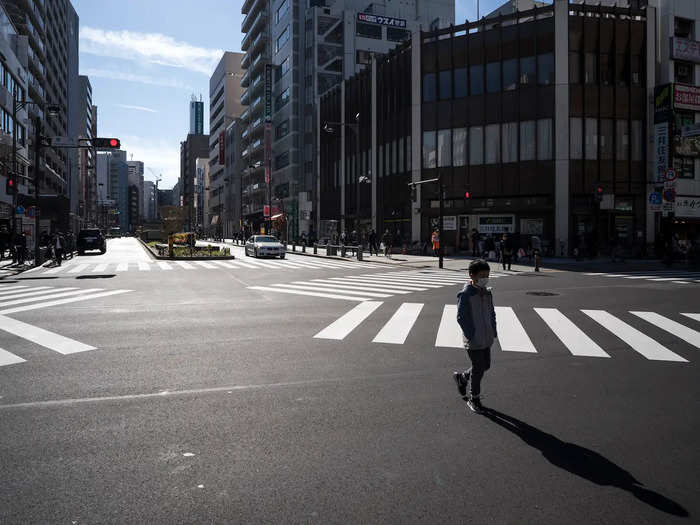
A running UNESCO tally says 188 countries had shut down their schools as of April 1, affecting over 1.5 billion students.
The closings have affected more than 89% of the enrolled learners in the world.
The spread of the virus has slowed in China, but some are skeptical of its case count.

China — where the virus first began to spread in late 2019 — has seen a sharp drop-off in its rate of new cases.
However, the US intelligence community filed a report to the White House indicating that China had given "intentionally incomplete" statistics, Bloomberg News reported on March 31.
The British government is said to be furious with China, accusing it of underreporting its number of cases "by a factor of 15 to 40 times," The Daily Mail reported on March 28.
Some Wuhan residents are also disputing the official death toll, citing an increase in the shipment of urns to the city's eight funeral homes. "The incinerators have been working round-the-clock," one person told Radio Free Asia.
Much of Western Europe is in the throes of the pandemic, and the European Union has also blocked all nonessential inbound travel.
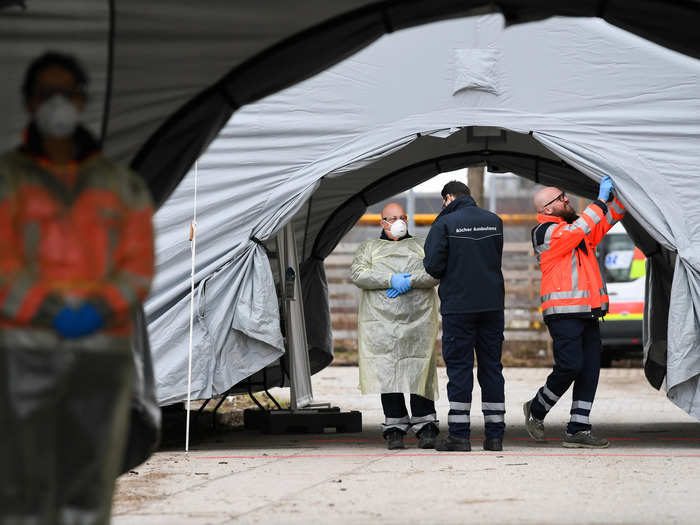
Spain's caseload is the third-highest in the world, and the country has the second-most deaths. Germany and France have the fifth- and sixth-highest caseloads.
All three countries have imposed strict lockdown measures.
Germany's death rate is much lower than Italy's or France's, largely because the country is testing an estimated 120,000 people a week, helping authorities identify milder cases. Germany also is in the early stage of its outbreak, has robust intensive care medical facilities, is seeing a younger average age of infection, and is under a strict lockdown, scientists say.
Still, German Chancellor Angela Merkel gave a grim prognosis at the start of a parliamentary meeting on March 10: Between 60% and 70% of the country's population could contract COVID-19 at some point.
There are no vaccines to prevent humans from contracting the virus, but multiple drugmakers are racing to develop one.
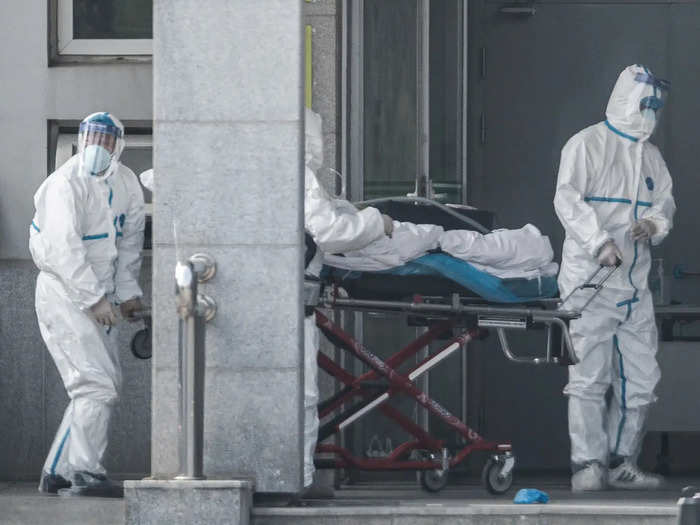
There are several dozen ongoing efforts to develop a coronavirus vaccine, according to a World Health Organization report that mentions 35 candidates.
A wide range of companies, including behemoths like Johnson & Johnson and Sanofi as well as smaller biotech companies and academic research labs, are conducting research.
Some are developing vaccines from scratch, while others are testing existing drugs to see whether they offer promising treatments. At least seven vaccines are likely to enter the human-testing stage by the end of 2020.
To prevent the spread of the coronavirus, people should wash their hands frequently with soap and water, making sure to scrub for at least 20 seconds.

The WHO, US CDC, and multiple other national health agencies all agree on the importance of handwashing. People should also avoid touching their eyes, nose, or mouth with unwashed hands.
The CDC and other authorities recommend social distancing to slow the virus's spread and prevent the influx of cases from overwhelming hospitals.
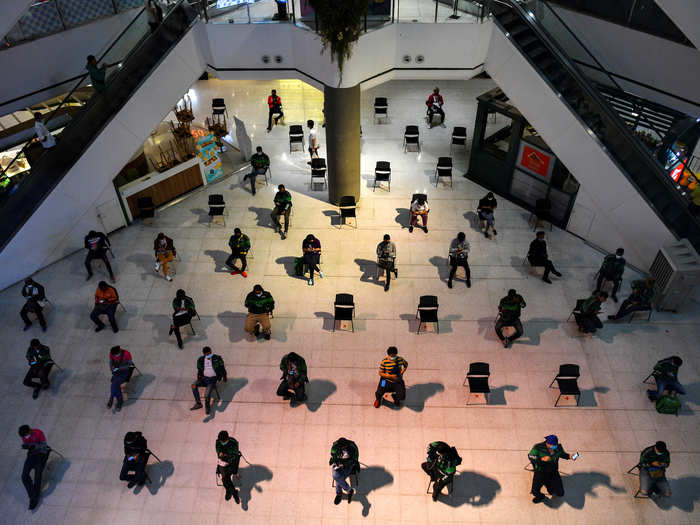
Social distancing, according to Johns Hopkins, consists of "deliberately increasing the physical space between people to avoid spreading illness," which includes staying at least 6 feet away from other people, canceling events, and working from home if possible.
This chart shows the rate at which the coronavirus has spread worldwide since it first emerged.

The true number of infected people is almost certainly higher than the official counts. That's especially true for the US, where testing capacities are limited.
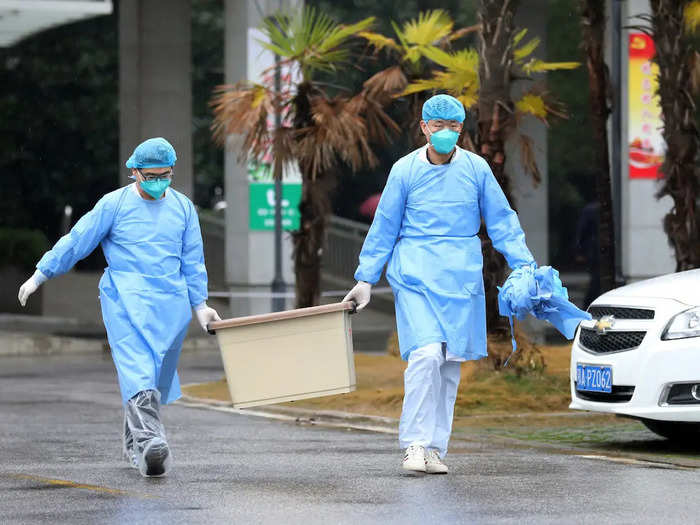
That's because some people can be asymptomatic and therefore may not seek a test.
Some countries, like the US, have also faced test shortages.
The US Centers for Disease Control and Prevention initially designed a faulty test for COVID-19, and it then hit delays in distributing a better one for state and local labs to use, ProPublica reported. That prompted a test-kit shortage that has prevented health officials from gaining a clear understanding of exactly how many Americans have contracted the virus.
Trump has said he doesn't take any responsibility for the significant delay in the country's coronavirus testing capabilities. He tweeted on March 25 that the US had done more testing than any other nation. There is no clear tally, however, of how many tests are being done in the country, and figures suggest the US is far behind countries like South Korea, Ireland, and Germany when it comes to tests per capita.
The coronavirus' incubation period is thought to be about five days.
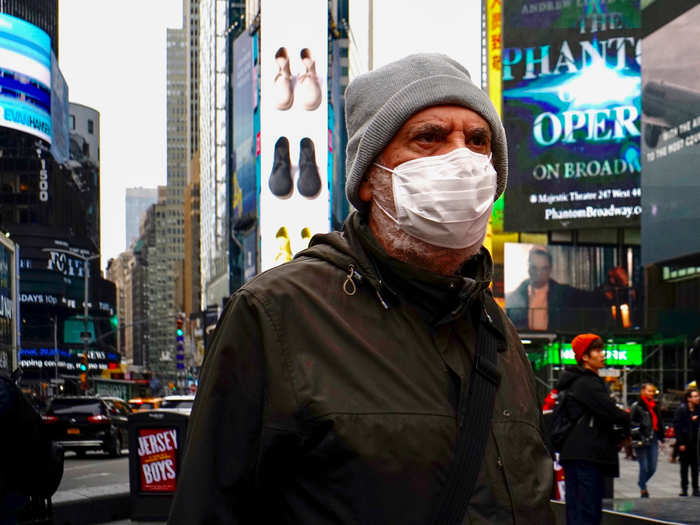
A recent study found that the coronavirus' average incubation period — the time that passes between when a patient gets infected and when their coronavirus test comes back positive — is five days. But in 1% of cases, it may last longer than two weeks.
Many countries have made quarantine policies based on a 14-day incubation, but the evidence is far from conclusive.
One study found that a patient's incubation period was 19 days. Another study published early in February analyzed 1,099 coronavirus cases in China and reported that the incubation could be as long as 24 days.
COVID-19's symptoms can be similar to pneumonia — they include fever and difficulty breathing.

Gastrointestinal symptoms like nausea and diarrhea are less common, but in some cases they have appeared before any sign of fever or respiratory symptoms.
Severe cases tend to worsen about five to 10 days after symptoms start. On average, people in Wuhan who recovered from the virus were discharged from the hospital after 2 1/2 weeks.
Death rates for older patients are much higher.
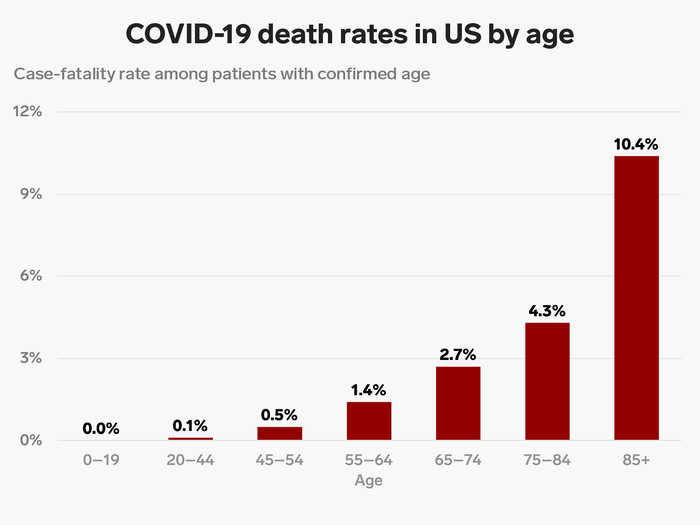
One study from the Chinese CDC looked at 44,000 confirmed patients in China and found that patients older than 80 had a 15% death rate there.
In New York City, reported death rates follow a similar trend by age.
Coronavirus patients with underlying health problems are more likely to die than otherwise healthy people.

Patients with heart disease in China had a 10% death rate, according to the same Chinese CDC study. The death rate for patients who reported no preexisting conditions was less than 1%.
Healthcare workers are particularly at risk. At least 3,400 Chinese healthcare workers have been infected, and at least 46 have died.

Research published in February found that nearly a third of hospitalized patients studied at the Zhongnan Hospital of Wuhan University were healthcare workers.
Li Wenliang, a doctor in Wuhan, was hailed as a hero in China after he contracted the virus and died while treating patients. He had warned fellow medical-school alumni about the disease before it was widely understood, for which Chinese authorities punished him.
Experts think people likely develop immunity after recovering from a coronavirus infection, but more research is needed.
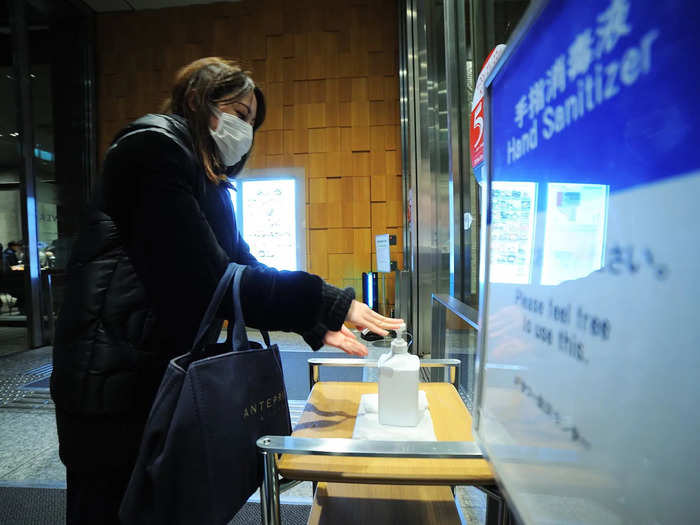
In one case study, a tour guide in Japan tested positive for the virus a second time. The patient — a woman in her 40s living in Osaka, Japan — first tested positive for the virus on January 29, and recovered. Nearly two weeks later, she developed throat and chest pains. She tested positive again on February 26.
China has also reported cases of people getting reinfected, though they remain rare. These cases seem to be exceptions rather than the rule — and possibly the result of testing errors, experts say. The body almost certainly develops short-term immunity in the form of antibodies.
No one is certain about the prospects for long-term immunity, though, seeing as so little time has passed since the coronavirus emerged.
Fauci recently told the "Daily Show" host Trevor Noah that he was "really confident" that recovered coronavirus patients would have immunity.
Fauci added that he'd be "willing to bet anything that people who recover are really protected against reinfection."
Few children have gotten sick, but the coronavirus may pose more of a risk to kids than scientists initially thought.
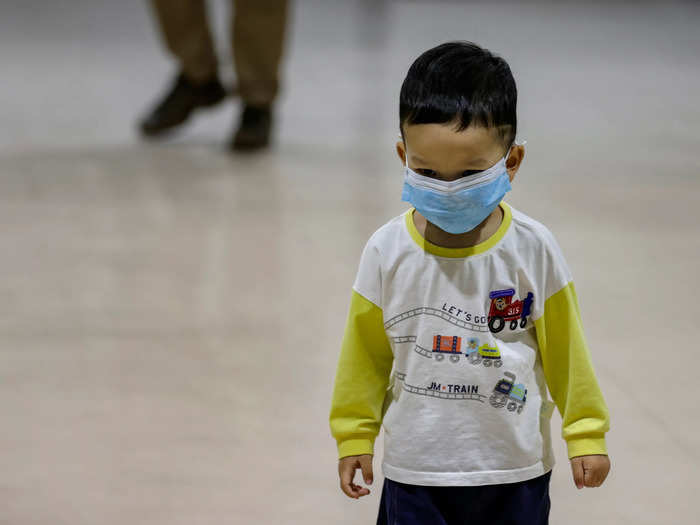
The virus mostly affects adults, but a study of 2,000 children who contracted COVID-19 in China found that children could play a role in spreading the virus and that 6% of infected kids developed severe or critical infections.
The worst-affected were infants: in the study, 10% of children under 1 year old developed a severe or critical infection, compared to 7% of under-five-year-olds, and 4% of kids aged 5 to 10 years old.
The WHO cautions parents to safeguard their children against the coronavirus.
The first case of the coronavirus was reported in late December in the central Chinese city of Wuhan.

However, Chinese authorities think the first case may have emerged on November 17, according to government data reviewed by the South China Morning Post. The identity of "patient zero" — the first human case of the virus — has still not been confirmed.
Some experts think the coronavirus first infected humans at a seafood market in Wuhan. But a recent study suggested the virus could have originated elsewhere.

Since most of the early patients had links to one market where live animals were sold, scientists pinpointed it as the likely origin of the virus. However, a group of Chinese scientists recently published a study suggesting that the virus could have started somewhere else, with the Wuhan market merely boosting the outbreak.
The virus almost certainly jumped to humans from bats, though an intermediary species might have played a role.
The most likely intermediary species between bats and people are pangolins, pigs, or civets.

Researchers at the South China Agricultural University have suggested that the endangered pangolin may be the most likely candidate.
SARS, which also originated in bats, is another member of the coronavirus family.
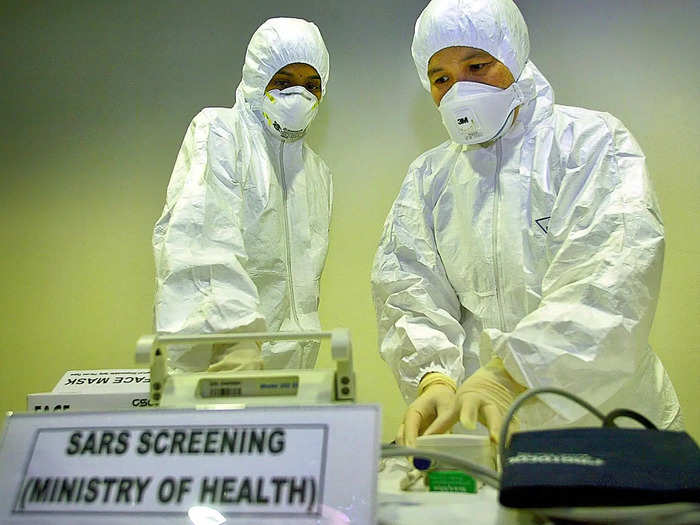
SARS jumped to humans from civet cats at a Chinese market that sold live animals. The virus killed 774 people from November 2002 to July 2003.
The total number of COVID-19 cases and deaths have far surpassed those of the SARS outbreak.

In late January, officials quarantined Wuhan and nearby cities by shutting down all transportation. The restrictions are starting to lift.
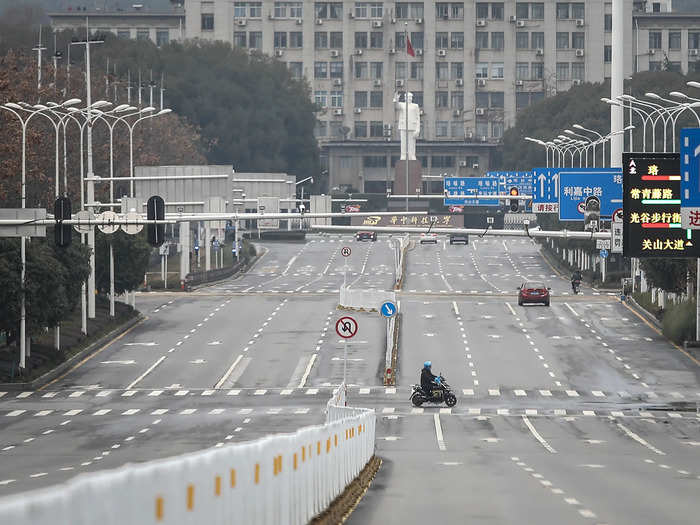
Wuhan's 11 million residents were told not to leave the city, barring special circumstances. All of Wuhan's transportation — including trains, buses, metros, ferries, planes, and cars — was halted January 23.
A CNN analysis in February found that more than 780 million people in China — more than half the population — were under some sort of travel restriction.
But China is now lifting restrictions, saying it will allow transport systems to run again from Wuhan on April 8. The rest of Hubei province, where Wuhan is the capital, has begun to allow travel again.
Some experts fear that when lockdowns end, a "boomerang effect" will occur, bringing a resurgence of the virus. Tokyo and Hong Kong, cities which managed to prevent outbreaks despite being some of the earliest-hit cities, are now worried about a new wave of cases.
Aria Bendix, Lauren Frias, Rosie Perper, Aylin Woodward, Kieran Corcoran, and Ali Millington contributed to this report.
Popular Right Now
Popular Keywords
Advertisement